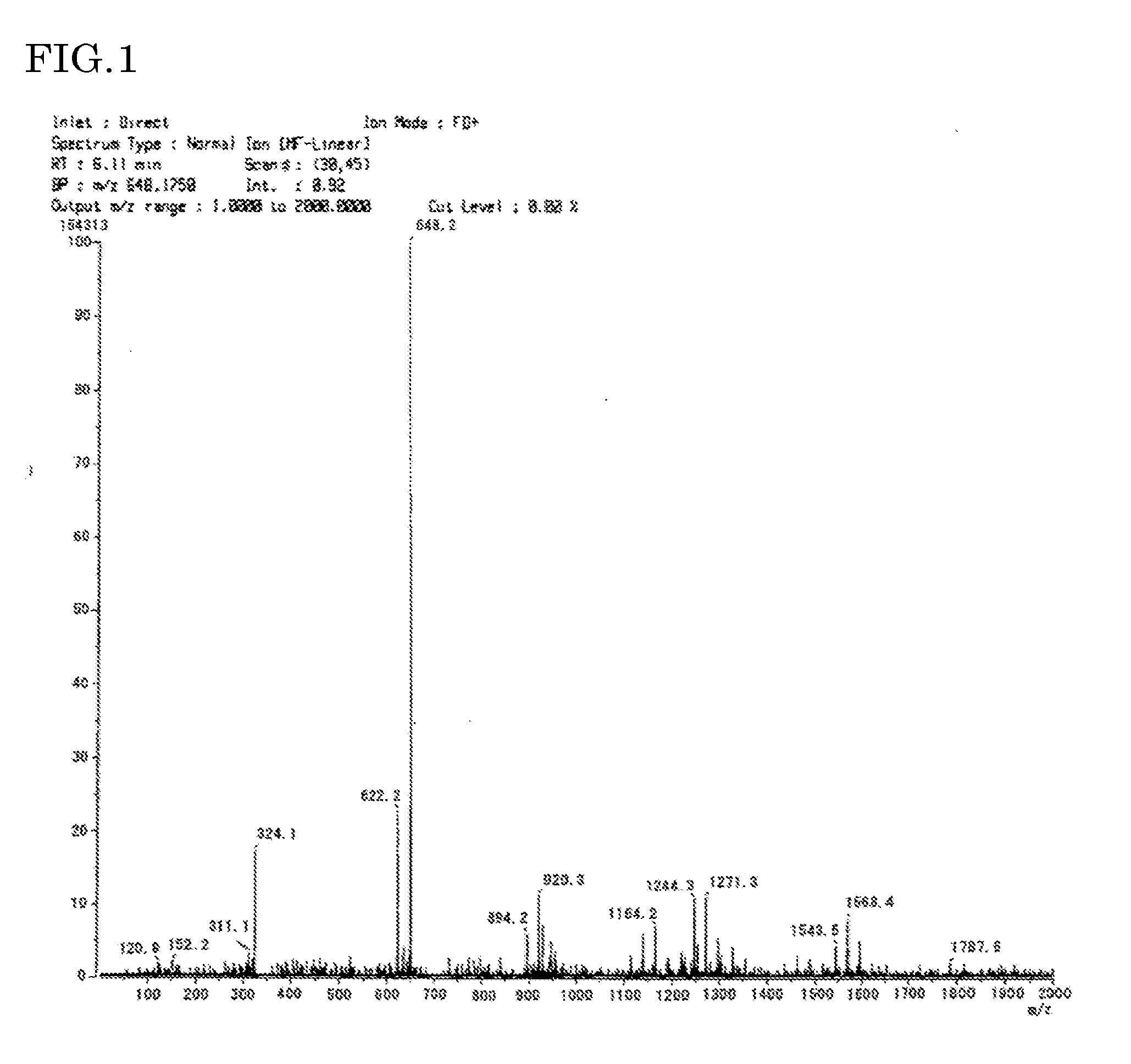Polyimide resin composition, and (polyimide resin)-fiber composite material
- Summary
- Abstract
- Description
- Claims
- Application Information
AI Technical Summary
Benefits of technology
Problems solved by technology
Method used
Image
Examples
production example 1
Production of Polyimide Resin 1
[0355]650 g of 2-(2-methoxyethoxy)ethanol (produced by Nippon Nyukazai Co., Ltd.) and 257.75 g (1.180 mol) of pyromellitic dianhydride (produced by Mitsubishi Gas Chemical Co., Inc.) were introduced in a 2 L separable flask equipped with a Dean-Stark apparatus, a Liebig condenser tube, a thermocouple, and a four-paddle blade. After creation of a nitrogen flow, the mixture was agitated at 150 rpm so as to become a homogeneous suspended solution. On the other hand, 83.96 g (0.5902 mol) of 1,3-bis(aminomethyl)cyclohexane (produced by Mitsubishi Gas Chemical Co., Inc.), 54.86 g (0.4722 mol) of 1,6-hexamethylenediamine (produced by Wako Pure Chemical Industries, Ltd.), and 23.64 g (0.1180 mol) of 4,4′-diaminodiphenyl ether (produced by Wakayama Seika Kogyo Co., Ltd.) were dissolved in 250 g of 2-(2-methoxyethoxy)ethanol with a 500 mL beaker, thereby preparing a mixed diamine solution. This mixed diamine solution was gradually added thereto with a plunger pu...
production example 2
Production of Polyimide Resin 2
[0357]650 g of 2-(2-methoxyethoxy)ethanol (produced by Nippon Nyukazai Co., Ltd.) and 260.97 g (1.197 mol) of pyromellitic dianhydride (produced by Mitsubishi Gas Chemical Co., Inc.) were introduced in a 2 L separable flask equipped with a Dean-Stark apparatus, a Liebig condenser tube, a thermocouple, and a four-paddle blade. After creation of a nitrogen flow, the mixture was agitated at 150 rpm so as to become a homogeneous suspended solution. On the other hand, 100.94 g (0.7096 mol) of 1,3-bis(aminomethyl)cyclohexane (produced by Mitsubishi Gas Chemical Co., Inc.) and 54.96 g (0.4730 mol) of 1,6-hexamethylenediamine (produced by Wako Pure Chemical Industries, Ltd.) were dissolved in 250 g of 2-(2-methoxyethoxy)ethanol with a 500 mL beaker, thereby preparing a mixed diamine solution. This mixed diamine solution was gradually added thereto with a plunger pump. This dropwise addition of the mixed diamine solution was carried out in a nitrogen flow state...
production example 3
Production of Polyimide Resin 3
[0359]650 g of 2-(2-methoxyethoxy)ethanol (produced by Nippon Nyukazai Co., Ltd.) and 163.59 g (0.750 mol) of pyromellitic dianhydride (produced by Mitsubishi Gas Chemical Co., Inc.) were introduced in a 2 L separable flask equipped with a Dean-Stark apparatus, a Liebig condenser tube, a thermocouple, and a four-paddle blade. After creation of a nitrogen flow, the mixture was agitated at 150 rpm so as to become a homogeneous suspended solution. On the other hand, 42.36 g (0.2978 mol) of 1,3-bis(aminomethyl)cyclohexane (produced by Mitsubishi Gas Chemical Co., Inc.) and 76.967 g (0.4467 mol) of 1,10-decamethylenediamine (produced by Kokura Synthetic Industries, Ltd.) were dissolved in 250 g of 2-(2-methoxyethoxy)ethanol with a 500 mL beaker, thereby preparing a mixed diamine solution. This mixed diamine solution was gradually added thereto with a plunger pump. This dropwise addition of the mixed diamine solution was carried out in a nitrogen flow state ...
PUM
| Property | Measurement | Unit |
|---|---|---|
| Temperature | aaaaa | aaaaa |
| Percent by mass | aaaaa | aaaaa |
| Glass transition temperature | aaaaa | aaaaa |
Abstract
Description
Claims
Application Information
 Login to View More
Login to View More - R&D
- Intellectual Property
- Life Sciences
- Materials
- Tech Scout
- Unparalleled Data Quality
- Higher Quality Content
- 60% Fewer Hallucinations
Browse by: Latest US Patents, China's latest patents, Technical Efficacy Thesaurus, Application Domain, Technology Topic, Popular Technical Reports.
© 2025 PatSnap. All rights reserved.Legal|Privacy policy|Modern Slavery Act Transparency Statement|Sitemap|About US| Contact US: help@patsnap.com



